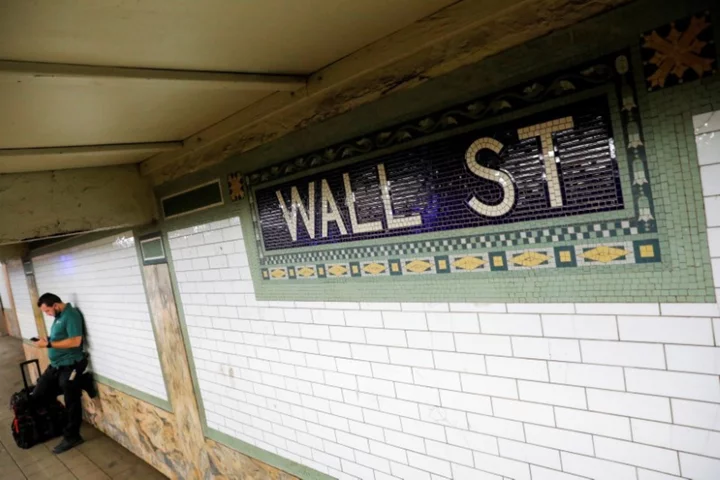LONDON It's a packed week ahead for markets with the European Central Bank holding a crunch meeting on whether or not to hike rates again as the economy falters, while the United States releases latest inflation numbers.
Rising oil prices could re-ignite angst about price pressures. Key UK jobs data and a G20 summit, marked by the absence of China's Xi Jinping, are also in focus.
Here's your week ahead in markets from Yoruk Bahceli in Amsterdam, Ira Iosebashvili in New York, Kevin Buckland in Tokyo, Li Gu in Shanghai and Amanda Cooper and Ahmad Ghaddar in London.
1/COIN TOSS
ECB rate hikes were once a done deal for traders, but a year and 425 bps of rises later, those days are long gone.
Inflation has slowed to just over 5% from nearly 12% last October, but is still too sticky for the ECB to relax. Economic activity is slowing fast, however, signalling stagnation for the euro zone, and those record-paced hikes are squeezing financial conditions.
That conundrum has left traders betting on a roughly 40% chance of a hike and 60% chance of a pause when rates-setters meet on Thursday.
Policymakers are sending mixed signals. The doves urge caution; the most hawkish hawks say a pause is not a done deal, but haven't explicitly called for a hike either.
The decision is a coin toss - expect more volatility either way.
2/ TRADING GOLDILOCKS
Stock markets are riding high on the Goldilocks narrative of ebbing inflation and resilient growth, heartened by an August U.S. jobs report that showed labor market conditions easing but not at an alarming pace.
Wednesday's August U.S. inflation data, followed by producer price and retail sales numbers a day later, are the next test.
A headline number far above the 0.5% month-on-month increase expected by economists could revive inflation fears, a sharp dropoff would likely spark worries that growth is slowing too quickly after Fed rate hikes.
Goldman Sachs lowered its probability for a U.S recession in the next year to 15% from 20%.
For now, those in the Goldilocks camp appear to be right. Whether that lasts is another question.
3/ CRACKS IN CHINA Pressure is on China to pump up stimulus with investors disappointed with steps so far. Mainland stocks suffered their worst session in weeks on Thursday, following dreary trade data.
Economic woes have undercut the currency, languishing on the weaker side of the key 7.3 per dollar line in offshore trading and resisting central bank efforts to support it through stronger-than-consensus official midpoint fixings. Every data point is being watched closely. Next up are consumer and factory price data this weekend, with industrial output and retail sales out on the 15th. Escalating tit-for-tat tensions with the United States are another worry. Washington is debating cutting off chip tech access to Huawei and SMIC; Beijing has reportedly banned official use of iPhones. Chinese President Xi Jinping will be spared hard questions at this weekend's G-20 summit in India: He's not attending, another worrying sign of distancing between China and the West.
4/ A PESKY GENIE
The focus for markets on employment is on job growth. Not so much in Britain, where wages are a far bigger headache for Bank of England policymakers.
The unemployment rate has been edging above last year's 48-year low, indicating some softening in the jobs market, while basic earnings are rising at record pace.
Workers are seeing wage growth in real terms for the first time in two years, albeit at just 0.1%. Good news for anyone paying bills, bad news for anyone trying to anchor inflation.
BoE Governor Andrew Bailey knows this all too well, having made headlines last February by calling for workers to show pay restraint, as real wage growth fell.
The question the BoE will have to answer on Sept 12, when August jobs numbers are released, is how to get the inflation genie back in the bottle.
5/ OIL RUSH
Brent crude has broken above $90 a barrel for the first time since November 2022 as Saudi Arabia and Russia look set to extend voluntary oil cuts to year-end.
Both will review their decisions monthly to consider deepening cuts or raising output, depending on market conditions.
Analysts warn that further price increases could face obstacles with demand likely to dip when U.S. refineries enter their September-October maintenance period, and from potentially higher supply from Iran, Venezuela and Libya.
For policymakers counting on price pressures abating fast, resurgent oil prices are problematic for the inflation outlook. At end-June, oil was down around 17% for the year, now it's up roughly 4% and rising.
(Compiled by Dhara Ranasinghe; editing by Philippa Fletcher)

